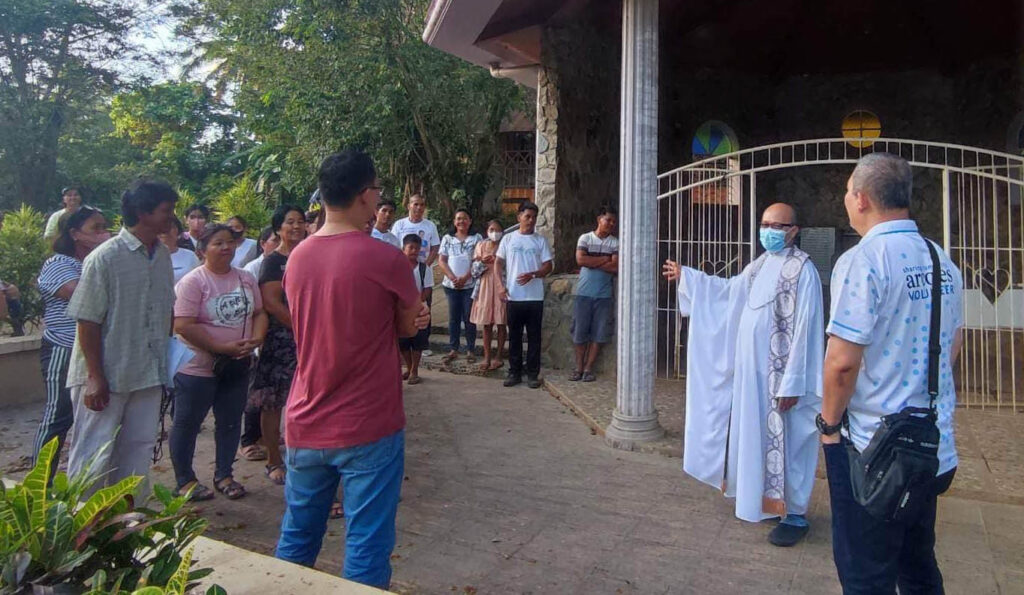Communion? Start Working Together
Just a couple of months before our priestly ordination in September of 1992, there was a felt need among seminary formators, the Secretariat of Formation, the Secretariat of Spirituality, and the Commission on Vocation Promotion to take a more serious look at our Augustinian Recollect Formation Program and to keep abreast of whatever developments there were in the more complex world of seminary formation outside our Recollect Order.
Back in 1992, our six-month diaconal exposure was divided into two interchangeable phases: either the educational apostolate would come first, to be followed by the parish ministry, or the parish exposure would be first, and the educational apostolate would come later in the second half.
Rev. Paulino Dacanay, OAR, and I were then serving the second half of our diaconal exposure from June to September of 1992 when our superiors tasked us to do a comparative study of the formation programs in seminaries in the western part of the Visayas, namely, Negros and Iloilo.
At that time, Reverend Paulino was assigned to the pastoral ministry, serving the Parish of St. Nicholas of Tolentine in what was then the Municipality of Talisay, Negros Occidental, and I was in the educational apostolate working as an all-around assistant (whatever that “all-around” means!) at the Campus Ministry Office in the University of Negros Occidental-Recoletos (UNO-R) in Bacolod City.

Good thing that our IT personnel (no, that is a different IT: Institución Teresiana!)—Tess Ferrer and Amy Angcos, who worked at the Campus Ministry Office, and Lucing Subaldo and Tess Java, who worked at the Instructional Media Center in UNO-R—facilitated our itinerary.
So, off we went for about a week to interview some seminary formators, vocation directors, spiritual directors, and rectors in Iloilo, Bacolod, and Dumaguete.
Looking back, I can no longer recall the names of all the priests we interviewed then, but there were two names that registered in my mind: Fr. Ramon Masculino and Fr. Jose Palma.
For reasons of brevity, let me first talk about Fr. Ramon Masculino and in my next column we will talk about then Fr. Jose Palma, now Archbishop of Cebu.
Fr. Ramon Masculino is now a monsignor and rector of the Regional Seminary of St. Joseph in Jaro, Iloilo. Most everyone calls him Monsignor now. But he still remains Fr. Nonoy to some of his older and less technical term-conscious friends. He was then director of the spiritual-pastoral year. It was so kind of him to accommodate Reverend Paul and me—both of us were young, idealistic, but clueless deacons then—despite his busy schedule. We had a simple dinner and after dinner, we had the interview. We talked about their formation program, specifically the content, methods, and approaches they applied to their spiritual-pastoral year.
We wanted to do some kind of benchmarking so we could compare their formative approaches with ours, learn the best practices from them, and maybe draw up workable models of formation that we could adopt, sooner or later.
He introduced us to the importance of human formation and growth in community life, the latter being supported by the BEC-type (Basic Ecclesial Community) formation approach, like dividing the entire seminary population into smaller groups, and these small groups reflect on the Word of God together, they pray together, and they do tasks together.
He explained things in his simple and down-to-earth manner. Father Nonoy began by saying, you see, in a traditional seminary setting seminarians are normally given individual assignments, usually some small areas in the seminary building to clean up during their daily or weekly schedule for work. Now, if the scope of work is large enough, two, three, or even four seminarians will be assigned to clean that part of the building.
Notice the human dynamics here, he stressed.
If there are two, three, or four seminarians who work, let us say, in the chapel, then very easily—almost instinctively—seminarians will divide the scope of work among themselves so that they can do things fast or even faster. We call it “efficiency,” right? So, one would take charge of sweeping the floor, the other will wipe the pews, and another will dust off the window panes, and so on and so forth. Without our knowing it, that division of labor destroys communion.
Silently, I asked, “in what sense?”
As if he knew what was raging on my mind, he immediately asked, “what will happen when something wrong happens? Let us say, one of the window panes was broken. Or, let us say, the one who was assigned to sweep the floor went somewhere and forgot to come back or did not return to work?”
I cannot recall if Reverend Paul and I were able to give him an answer back then. All I remember now is we just listened intently to him.
Then Father Nonoy volunteered to answer his own question: “it is easy to point the finger at the individual who was responsible for that portion of work.”
“That reasoning, that worldview, or that attitude destroys communion,” he pointed out, “because there is no sense of communal responsibility. While there are three or four of us who are assigned to the chapel; in reality, we work individually. I take charge of only the windows. I do not care if my companions do their work well enough or not, for as long as I am doing my own job well. I am not responsible for the pews and the chairs in the chapel, neither am I responsible for the floor. Seminarians even compete who among them works the fastest, and then the one who finishes his work ahead of the others, also goes to play basketball ahead of the others.”
He paused, looked at us young deacons, and rhetorically asked, “Now, where is community life then? Were there not all four of us assigned to work in the chapel?”
In the B-E-C approach, Father Nonoy explained, all the four of us will clean the windows together, wipe the pews together, and sweep the floor together. Of course, we feel that things are slow and impractical. In the beginning, yes. And, perhaps, we still insist, we could have just divided the work among ourselves to do things faster. Division of labor, that is. The individualistic and the independent-minded among us immediately feel the uneasiness and the awkwardness of working together. For the longest time, our seminarians were not exposed to teambuilding exercises. Even in games, we see individuals who always want to be the hero or the most valuable player.
But because of this B-E-C approach, we develop synergy, and with synergy comes teamwork. That is the beginning of communion.
So back to our example of the chapel assignment, we will check everything. We will see to it that the chapel is clean before we leave. Whatever happens, the four of us will be responsible for everything.
Communion is the bedrock of training our seminarians in common mission and in communal responsibility.
So, you want community life? Build teamwork.
You want communion? Start working together.#
Fr. Ferdinand Hernando, MB, SThL







